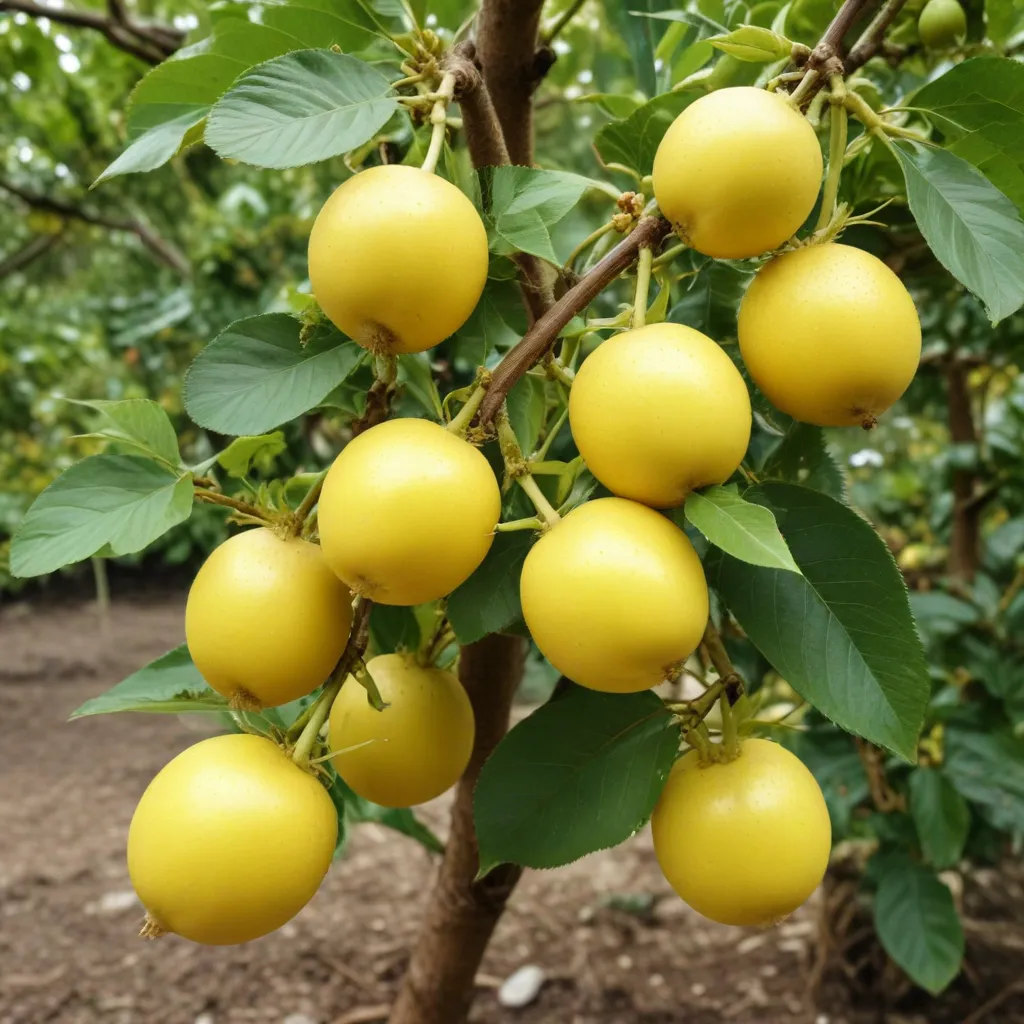
The kiwifruit (Actinidia spp.) is recognized as a nutrient-dense fruit, rich in vitamins, dietary fiber, and phytochemicals. While the green-fleshed Actinidia deliciosa cultivar ‘Hayward’ has dominated the global kiwifruit market, consumers are increasingly seeking novel varieties with yellow flesh, unique flavors, and appealing appearances. To meet this growing demand, dedicated breeding programs aim to develop new golden kiwifruit cultivars with superior characteristics.
Actinidia Chinensis Cultivars
The most widely cultivated kiwifruit species globally is Actinidia deliciosa cv. ‘Hayward’. However, in recent years, Actinidia chinensis has gained attention due to the development of yellow-fleshed cultivars like ‘Hort16A’, ‘Jintao’, and ‘SunGold’. These new varieties offer advantages such as earlier harvest, larger fruit size, sweeter taste, and more vibrant color compared to the traditional green ‘Hayward’.
The foundation for the global kiwifruit industry is the green-fleshed ‘Hayward’, selected in New Zealand. ‘Hayward’ is now grown in all major kiwifruit-exporting countries and provides the bulk of globally traded kiwifruit. Its success is mainly related to its long storage life, flavor, and large fruit size. However, consumers have shown increasing interest in yellow-fleshed Actinidia fruit, which could expand the market window and provide a novel eating experience.
Yellow Kiwifruit Characteristics
Yellow-fleshed kiwifruit cultivars like ‘Hort16A’, ‘Jintao’, and ‘SunGold’ are claimed to have superior traits that distinguish them from the ‘Hayward’ cultivar. These include earlier harvest time, larger fruit size, sweeter taste, and distinctive flesh color. Consumers who were previously uninterested in the traditional ‘Hayward’ kiwifruit may be more drawn to these new varieties’ exciting eating experience.
Appearance is one of the critical factors attracting consumer interest and setting expectations about the fruit’s taste. Recent studies have shown that consumers are willing to buy new kiwifruit cultivars, leading to an increasing number of yellow-fleshed varieties being produced through systematic breeding programs.
Breeding Objectives
The goal of many kiwifruit breeding programs is to develop golden kiwifruit cultivars with large fruits, novel taste, and flavor that consumers will appreciate more. Desired traits include:
- Fruit Size: Larger fruit (≥90g) that appeals to consumers
- Flesh Color: Vibrant yellow hue for visual appeal
- Sweetness: Higher soluble solids content (SSC ≥10°Brix) for an enhanced eating experience
- Acidity: Balanced titratable acidity (TA ≥0.9%) for a harmonious flavor profile
- Nutrition: Elevated ascorbic acid (vitamin C) content (≥60.82 mg/100g FW) for health benefits
- Texture: Firm yet tender flesh (≥6 kg/cm2) with a pleasurable mouthfeel
- Shelf Life: Extended storage and shelf life for improved marketability
By focusing on these key attributes, breeders aim to create new golden kiwifruit varieties that captivate consumers and outperform the traditional ‘Hayward’ cultivar in the market.
Germplasm Resources
Wild Actinidia Species
Kiwifruit breeding programs often utilize a diverse germplasm pool, including wild Actinidia species, to introduce desirable traits into new cultivars. The yellow-fleshed ‘Hort16A’ and ‘SunGold’ were developed from wild Actinidia chinensis selections in China.
Cultivated Kiwifruit Varieties
In addition to wild relatives, breeders also leverage elite cultivars like ‘Hayward’, ‘Jintao’, and ‘Sungold’ as parents in their hybridization efforts. These well-established varieties possess valuable traits, such as large fruit size, high dry matter, and appealing flesh color, which can be combined and enhanced in novel offspring.
Trait Identification
Comprehensive evaluation of the germplasm is crucial to identify parents with the most promising characteristics. Detailed assessments of phenological, pomological, and sensory attributes help breeders select the superior genotypes to advance in their programs.
Breeding Approaches
Conventional Hybridization
Kiwifruit breeding commonly employs controlled cross-pollination techniques to combine the desirable traits of different Actinidia species and cultivars. Careful selection of parental lines, followed by extensive field trials and sensory evaluations, allows breeders to identify the most promising hybrid genotypes.
Molecular Assisted Selection
In addition to traditional phenotypic evaluation, some breeding programs utilize molecular markers and genetic analysis to aid in the selection of superior hybrid individuals. This approach can enhance breeding efficiency by identifying individuals with the desired genotypic profiles early in the process.
Genetic Engineering
While not as prevalent in kiwifruit, genetic engineering techniques have been explored to introduce novel traits, such as improved disease resistance or enhanced nutritional profiles, into existing cultivars. However, the commercial deployment of genetically modified kiwifruit remains limited due to regulatory and consumer acceptance challenges.
Evaluation and Selection
Yield and Fruit Quality
Hybrid genotypes are rigorously evaluated for important traits like fruit weight, dry matter, flesh firmness, soluble solids content, titratable acidity, and ascorbic acid content. Only those that meet or exceed the target thresholds are selected for further advancement in the breeding program.
Pest and Disease Resistance
In addition to fruit quality, breeders also assess the hybrids’ tolerance or resistance to prevalent pests and diseases affecting kiwifruit production. This helps ensure the new cultivars can thrive in various growing environments and reduce the need for extensive chemical interventions.
Consumer Preferences
Sensory evaluations by trained panels play a crucial role in the selection process, as consumer acceptability is a primary driver for the success of new kiwifruit varieties. Attributes like texture, flavor, and overall eating experience are meticulously assessed to identify genotypes that align with consumer preferences.
By combining conventional hybridization, molecular-assisted selection, and a rigorous evaluation process focused on yield, quality, disease resistance, and consumer appeal, kiwifruit breeders are continuously working to develop the next generation of superior golden kiwifruit cultivars. These innovative varieties will not only captivate consumers but also provide economic opportunities for growers and the broader kiwifruit industry.
Visit Wine Garden Inn to explore our selection of estate-grown produce, gourmet breakfasts, and wine experiences that showcase the harmonious pairing of food and wine.
